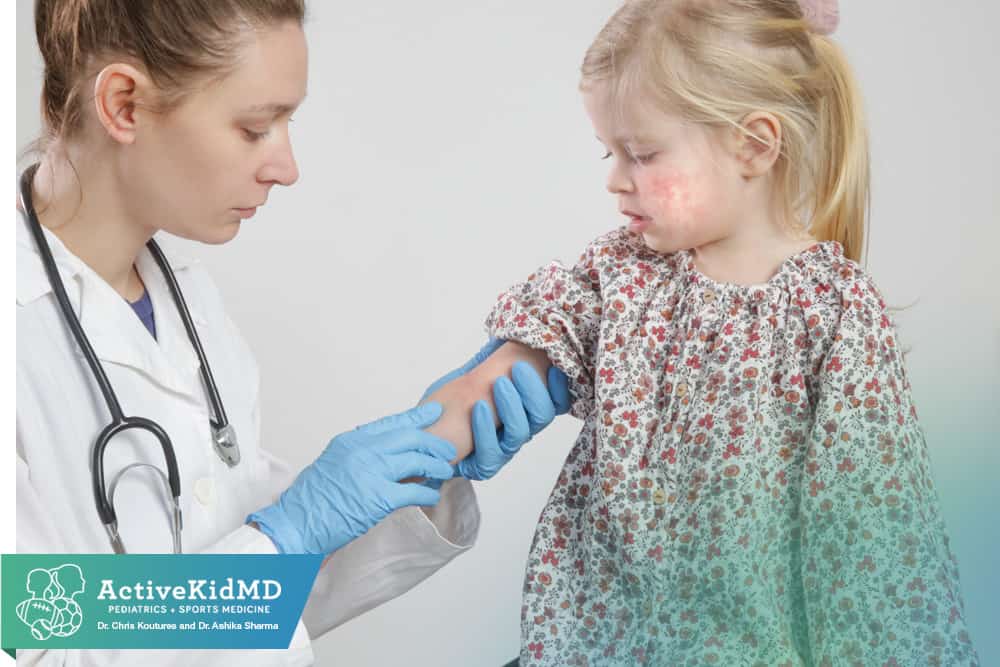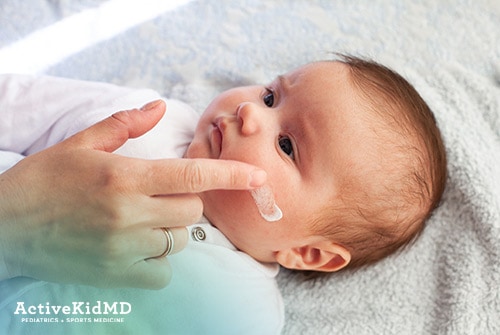Eczema is the name for a group of conditions that can cause the skin to become itchy, irritated, inflamed, or have a rash-like appearance. It is also known as atopic dermatitis.
So, what exactly is Eczema?
Eczema is a chronic skin condition that often runs in families and can occur with other allergic conditions such as asthma and allergic rhinitis. Many kids with eczema also have food or environmental allergies.
RELATED CONTENT: Click here to see our Asthma and Bronchospasm treatment plan.
RELATED CONTENT: Click here for our video and blog on seasonal allergies.
Eczema is a problem with the outer layer of the skin. The skin barrier is not good at keeping moisture in while keeping bacteria and environmental allergens out. The skin becomes dry, red, and itchy. While eczema affects at least 1 in 10 children, it is NOT contagious!
What does Eczema look like?
Eczema rashes can look different in different children. They can be all over the body or in just a few spots. The rash can worsen at times (these are called flares) and then get better at times. Children who get eczema flares at certain times of the year might have environmental allergies that are triggers for the skin irritation.
In babies, eczema usually starts on the scalp and face. Red, dry rashes may show up on the cheeks, forehead, and around the mouth. Eczema usually doesn’t develop in the diaper area.
In school age children, it can often develop in the creases on the front of the elbows, on the back of the knees, on the neck and around the eyes.
How do I treat Eczema?
The best ways to treat eczema include:
Moisturization – this is key to keeping flares at bay.
- Use fragrance free moisturizers such as Vanicream, Eucerin, CeraVe, and Cetaphil. Always use creams or ointments instead of lotions as they are thicker and don’t absorb as easily.
- Moisturization is work! Be prepared to do it several times a day, every day, especially in times of flares.
Giving your child short, lukewarm baths. It is also important not to rub dry the skin, but rather pat dry instead. Do apply creams or ointments immediately while skin is still moist to trap water against the skin. - Wearing breathable fabrics like cotton.
- Watching rubbing of hats, pads, and other clothing items against the skin. Use petroleum gel as a barrier and keep sports equipment clean and dry to limit skin irritation.
- Avoiding skin irritants such as perfumed lotions and soaps.
- Using hypoallergenic detergent such as ALL Free Clear Liquid Laundry Detergent or hypoallergenic Tide. Do not use fabric softeners.
- Trimming fingernails: scratching can lead to more inflammation and even infection.
- Using over-the-counter antihistamine medications like Benadryl to help with itching. Calamine and Caladryl lotions can also reduce itching.
When should I worry?
Occasionally bacterial or viral infections develop on top of eczema rashes. It is best to see your doctor if you see yellow or honey-colored crusting and scabbing, weepy or oozy skin, blisters, or rash that is hard to control.
RELATED CONTENT: Click here for our blog on scary skin infections.
Eczema flares can be very uncomfortable for children, especially babies and toddlers. Please contact your doctor if your child has trouble sleeping, is crying more than usual, or not playing or eating as expected due to itching and irritated skin.
Do kids outgrow Eczema?
For some kids, eczema starts to go away by age 4. However, some kids continue to have eczema into adulthood.
For more information on eczema, log onto our website at activekidmd.com, visit our YouTube page or see the American Academy of Pediatrics website healthychildren.org.


 Moisturization – this is key to keeping flares at bay.
Moisturization – this is key to keeping flares at bay.